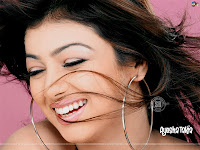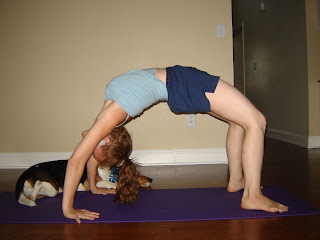 This asan is simple form of Ardha-MatsyendrasanThose who are unable to perform Ardha-matsyendrasan should practise this asan.
This asan is simple form of Ardha-MatsyendrasanThose who are unable to perform Ardha-matsyendrasan should practise this asan.TECHNIQUE:
- Sit erect stretching yoyr legs in front together. Hands by the side, palms resting on the ground, fingers together pointing forward.
- Slowly fold your one leg (i.e. left leg) at the knee and place the sole on the ground near the knee of the right leg. The knee of left leg should make 90 deg angle towards the sky.
- taking the left hand towards back place the palm on the groundat the distance of 9 inches straight from the spine. Fingers together pointing backwards. Then place the right hand towards the other side of left knee. If legs are stretched towards east then fingers of hand will point towards north.
- Now twist your head towards backside and try to look at the back side.
- While returning to the original position first bring your head to the original position.
- Now take the right hand to its original position and then bring the left hand from back and place it by the side of the body
- Now slowly stretch your folded leg and sit erect in your original position.
- In the same way practise it from the other leg. This makes one round of vakrasan.
REMEMBER:
- This asan is simple, but those who are having a big belly may feel it difficult to place the hand to the other side of the knee, they are suggested to place the hand on the knee or wherever it is, if it is not possible to place it on the ground.
BENIFITS AND LIMITATIONS:
- This removes constipation, flatulence, liver weakness and nervous weaknes.
- Reduce the rigidity of the spine.
- This is also useful for the Kidney and other stomach diseasas.
- Everybody can practice this asan.














